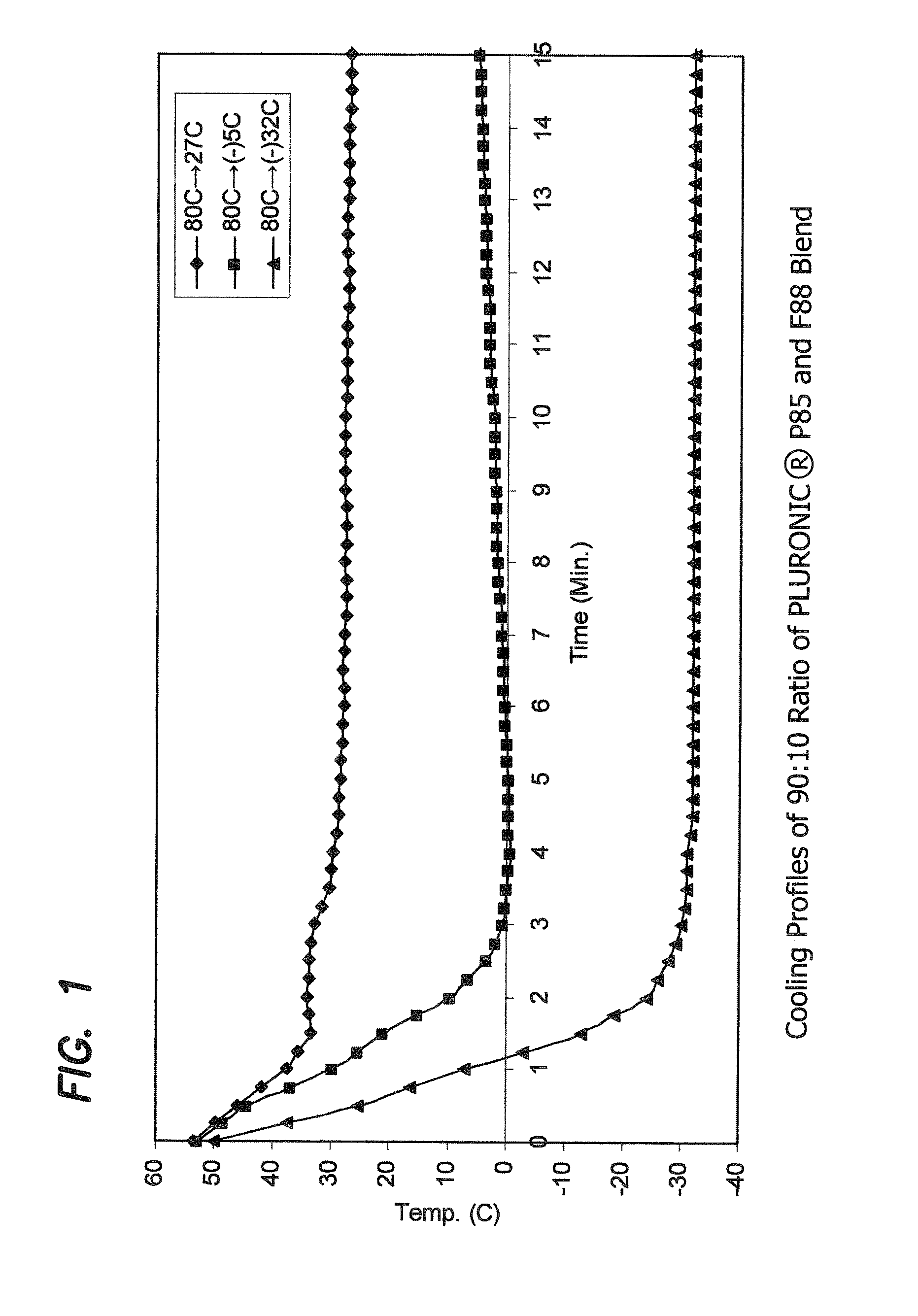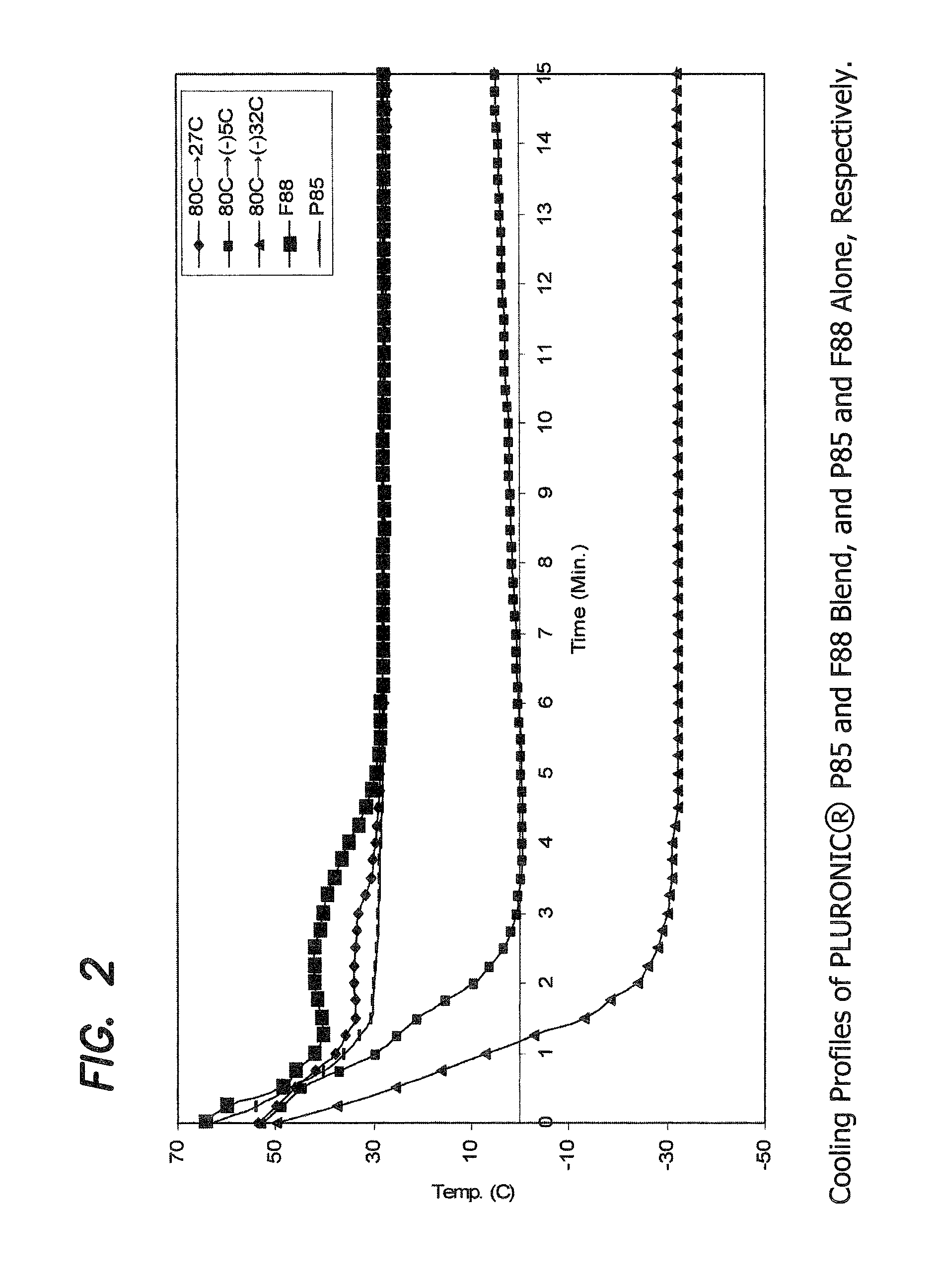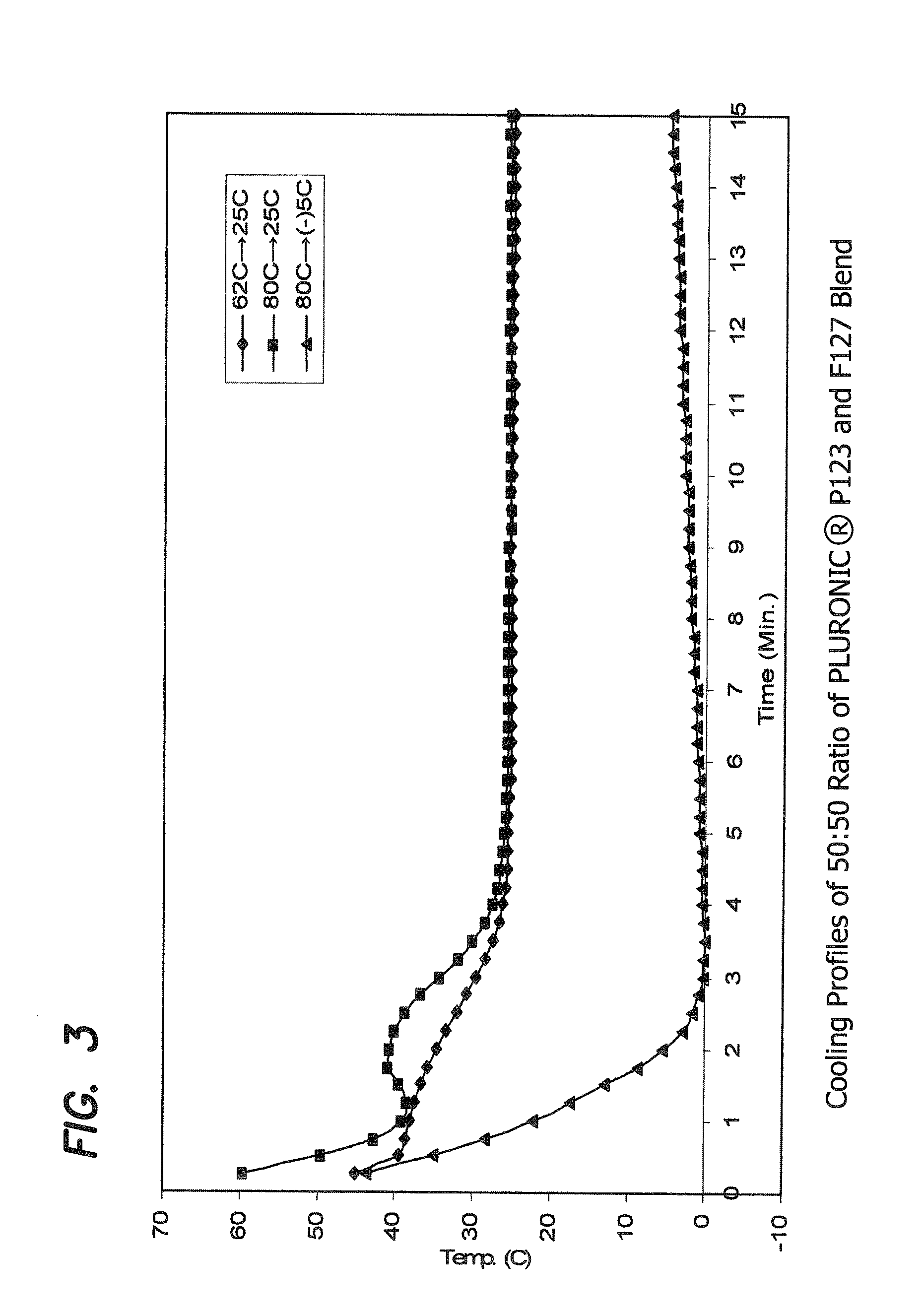Biocompatible polymeric compositions having microcrystalline and amorphous components and methods for their manufacture
a polymer composition and microcrystalline technology, applied in the direction of emulsion delivery, pharmaceutical delivery mechanism, coating, etc., can solve the problems of inability to mold or manipulate crosslinked hydrogels, inability to achieve the physical and mechanical properties of hydrogels that are generally less than optimal, and the adverse effects inherent in traditional bone wax compositions. achieve the effect of improving the safety and effectiveness of drug application, reducing drug doses, and biological benefits
- Summary
- Abstract
- Description
- Claims
- Application Information
AI Technical Summary
Benefits of technology
Problems solved by technology
Method used
Image
Examples
example 2
Preparation of PLURONIC® Alloys of P85 and F88 Blend
[0136]Two molten material temperatures (80° C. and 58° C.), three mold temperatures (room temperature (27° C.), −5° C. and −32° C.), and three different formulation weight ratios, 90:10, 80:20 and 70:30, of PLURONIC® P85 and F88 materials, respectively, were used in this study. The ingredients of each formulation were melted and mixed at 90° C. for 12 hours in a sealed glass container. The material was then allowed to cool down to 58° C. or 80° C. (at which temperature the material is still molten) and equilibrated for 2 hours at that temperature before the molding experiment.
[0137]Molding was conducted using the mold apparatus described earlier. The pre-assembled mold was kept at room temperature, −5° C., or −32° C. (this latter temperature achieved using an isopropyl alcohol / dry ice mixture) for 1 or more hours until the temperature reached equilibrium before each molding experiment. The molten formulation was dispensed into the ...
example 3
Cooling Profiles of 90:10 Ratio of PLURONIC® P85 and F88 Blend
[0158]The cooling profiles of the molten PLURONIC® P85 and F88 blended at a 90:10 ratio, when molded under different cooling conditions were studied to investigate the cause of the significant differences in the structural properties of the otherwise identical alloy materials, as exhibited by the molded articles.
[0159]PLURONIC® P85 and F88, blended at a 90:10 ratio, was prepared as described before, and molded as also described above. After the molten material was dispensed into a mold cavity, a thermocouple was inserted into the center of the filled mold cavity. The temperature of the material was recorded every 15 seconds. The lapsed time between dispensing of the molten material and the first temperature reading is about 10-12 seconds.
[0160]Three mold temperature: room temperature (27° C.), −5° C., and −32° C. was studied. In the 27° C. and −32° C. studies, the mold was maintained at a constant temperature. For the −5°...
example 4
Cooling Rates of 90:10 Ratio of PLURONIC® P85 and F88 Blend
[0164]The cooling rate of the molten material can be estimated from the slope of the cooling profiles. The initial, first minute, cooling rates for blended 90:10 PLURONIC® P85 and F88 alloys were calculated from the slopes of the cooling profiles, and were found to be −15° C. / min, −23° C. / min, and −42° C. / min, respectively for 27° C., −5° C. and −32° C. mold. This indicates that a cooling rate of about −15° C. / min or less will result in microcrystalline formation in such a PLURONIC® alloy. While not directly measured, it is estimated based on the results from this study and the temperature of the liquid nitrogen (−196° C.), that alloy cooled in the manner carried out in this experiment from 80° C. in liquid nitrogen should have a cooling rate of about −120° C. / min.
PUM
| Property | Measurement | Unit |
|---|---|---|
| melting point | aaaaa | aaaaa |
| degree of crystallinity | aaaaa | aaaaa |
| degree of crystallinity | aaaaa | aaaaa |
Abstract
Description
Claims
Application Information
 Login to View More
Login to View More - R&D
- Intellectual Property
- Life Sciences
- Materials
- Tech Scout
- Unparalleled Data Quality
- Higher Quality Content
- 60% Fewer Hallucinations
Browse by: Latest US Patents, China's latest patents, Technical Efficacy Thesaurus, Application Domain, Technology Topic, Popular Technical Reports.
© 2025 PatSnap. All rights reserved.Legal|Privacy policy|Modern Slavery Act Transparency Statement|Sitemap|About US| Contact US: help@patsnap.com



